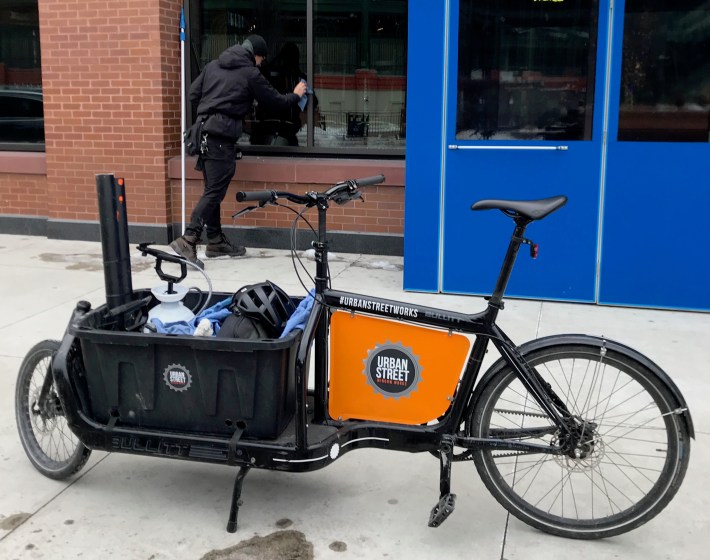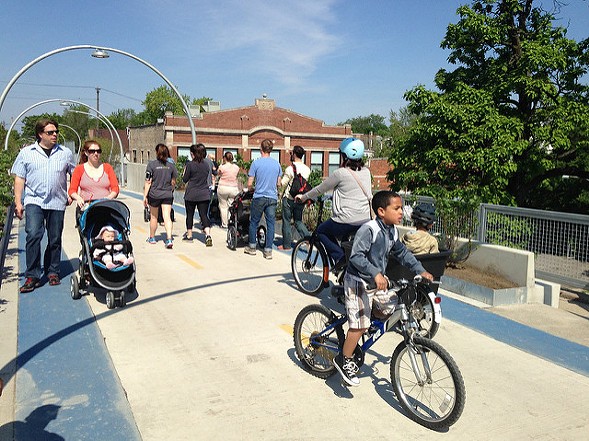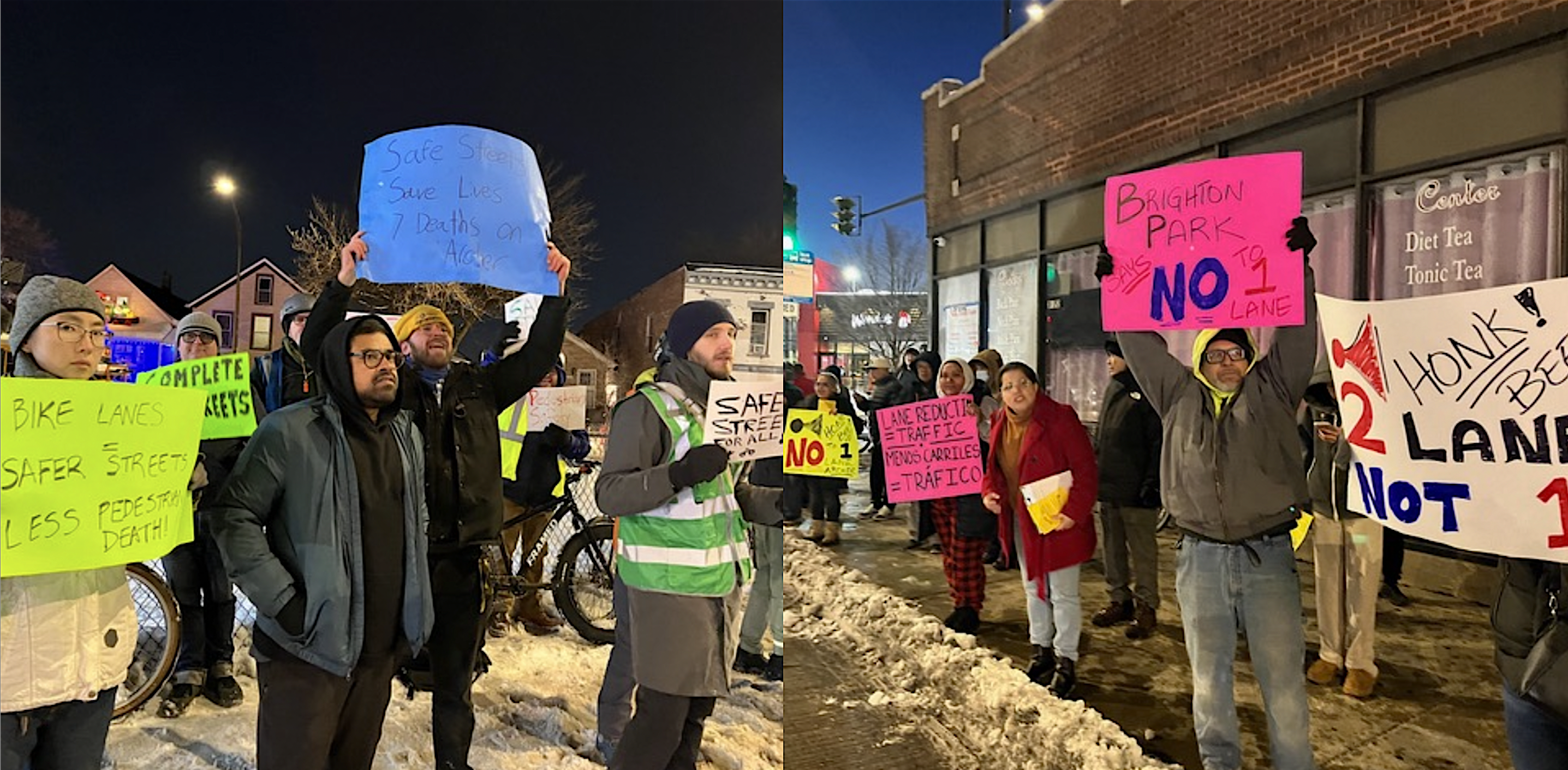A new proposal to ban new, more expensive homes and teardowns along the Bloomingdale Trail, aka The 606, for 14 months as a strategy to curb housing displacement set the wheels in my mind spinning. The demand for living close to the elevated path shows there are lots of people who want to live near car-free spaces where they can walk or bike without worrying about motor vehicle traffic. Parts of town near the Lakefront Trail are generally well developed and in-demand places to live, although there are still a few good opportunities to upzone near the north Red Line and along the Clark Street corridor to encourage more housing density.
So it's no surprise that people are flocking to the area along the Bloomingdale, which has had the unfortunate side effect of raising property taxes and rents, making the area unaffordable to many longtime residents. The phenomenon of new sustainable transportation amenities like greenways and upscale transit-oriented developments fueling displacement has a name: environmental gentrification.
But instead of of arguing against trails like The 606, walkable development, improved transit, and protected biking infrastructure due to concerns about displacement, we need to ensure all Chicagoans are given real choices in how they get around, have access to plentiful affordable housing, and have access to high-quality public space and natural beauty. In reality, a major barrier to creating more economically and ethnically integrated communities is car-centric transportation planning and development.
The street space we dedicate to lanes for parking and driving cars makes it more difficult to provide safe and convenient, walking, bus, and bike infrastructure that improves transportation access, particularly for lower-income residents who can't afford car-ownership or ride-hail. Wasting land on parking lots and garages squanders opportunities to build more affordable housing, plazas, parks, and community gardens. Zoning requirements that force developers to include excessive amounts of off-street parking in their projects drives up housing costs. All these policies make neighborhoods less affordable and livable for residents of all races and income levels.
I often think about what our neighborhoods could look like if they weren't dominated by cars. There's a long list of potential benefits.
I think about the opportunities that would become available if folks weren't dedicating so much of their household budgets on car-related expenses, and how much travel time could be saved for residents if the city committed to creating a citywide grid of bus-priority streets with well-enforced dedicated lanes, prepaid boarding, and transit-friendly stoplights.
Some small businesses could hire more employees if they didn't need to buy cars or trucks to provide services. Having a network of protected bike lanes would encourage the growth of more bike-oriented businesses, like this pedal-powered window-washing service.

Children's freedom of movement could also be greatly expanded with protected bikeways, which benefits them in terms of health, independence, and self-esteem, as well as their caregivers. Our social connections could increase with streets that are attractive and safe for biking and walking.
Our current retail corridors could be livelier and profitable with wider sidewalks and car-free or car-lite stretches. New retail corridors could be created with more neighborhoods designed for walking, biking, and high transit use. There will be less air and noise pollution with fewer cars on our streets.
We can reverse some of our poor public health outcomes, such as heart-disease and diabetes rates, with increased physical activity facilitated by active transportation use, increased social connections, and increased access to greenspace. What if instead of asking how many cars we can accommodate, we started to ask how we can meet the mobility demands of our neighborhoods, our city, and our region most efficiently and sustainability?
I watch the Streetfilms clip about Barcelona's Superblocks program -- a strategy to restrict traffic to major roads, turning secondary streets into pedestrianized or semi-pedestrianized spaces -- a few times a month and daydream about that concept coming to Chicago. We already have a grid system and fairly dense, walkable neighborhoods. All we need is the political will to open up our streets to better uses than storing empty vehicles or moving one person in a huge metal box.
The Superblocks are not without their controversies. The presence of Superblocks has led to increases in neighborhood desirability, rents, and thus housing displacement. To me, this points to a need for more Superblocks, so that their benefits aren't just enjoyed experienced by those who can afford to live near them or those living in affordable housing who were lucky enough to have one established near them. There must also be measures to protect longtime residents from being priced out. As usual, there's a lot Chicago can learn from other cities when it comes to creating a more sustainable transportation network and creating places that are more welcoming to people on foot and bike.







